Stefan Johansson: The Motor Sport Interview
An artist on and off the asphalt, Swedish all-rounder Stefan Johansson paints a picture of his drives in Formula 1, IndyCar and sports cars
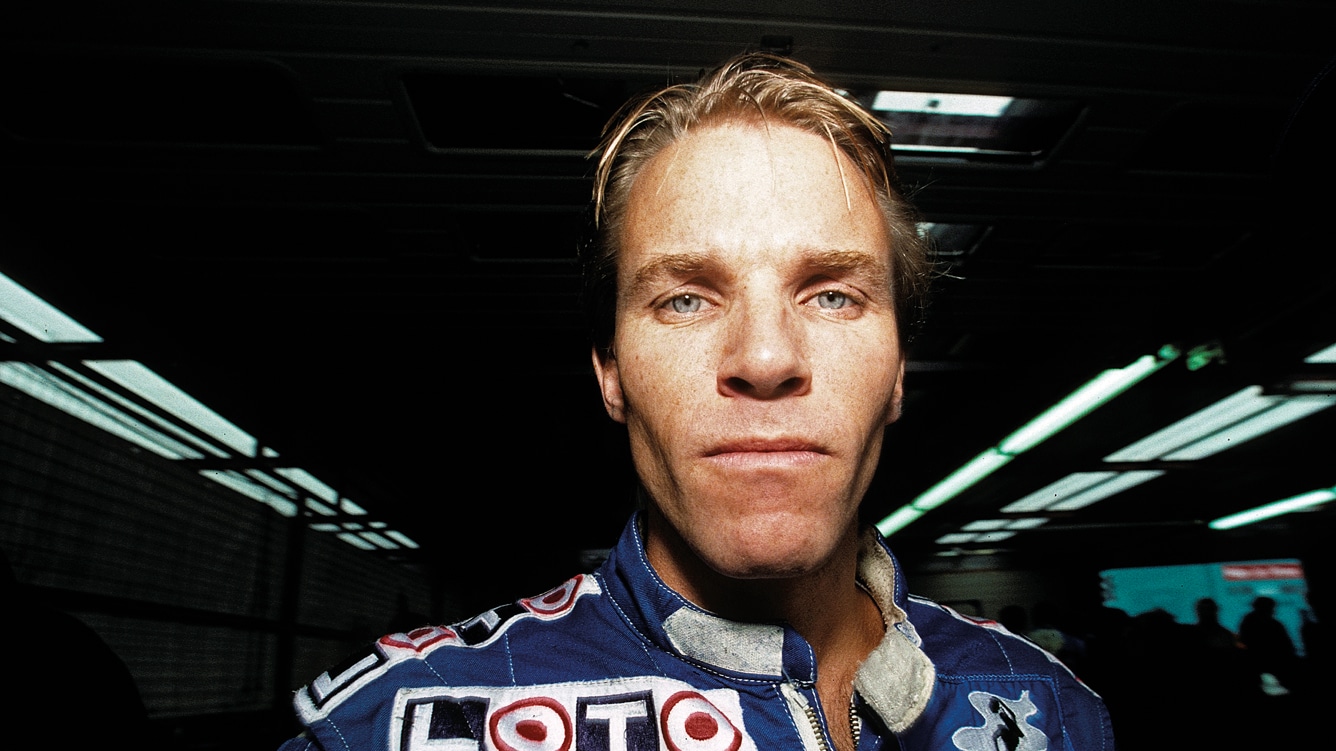
Getty Images
The Motor Sport Interview
Stefan Johansson began as a kart racer, winning the Swedish championship in 1973 before moving to Formula Ford, winning the championship in 1977 and ’79. His speed and natural talent took him to Formula 3 where he won the British championship for the Project Four team.
He made his Formula 1 debut with the Spirit-Honda at the British Grand Prix in ’83 and after stand-in drives for Tyrrell and Toleman he was signed by Ferrari where he stayed for two years before going to McLaren alongside Alain Prost. From 1988 to ’91 he raced for Ligier, Onyx, AGS and Footwork before moving to America, racing in the CART series before creating his own Indy Lights team, and later his own CART team. His sports car career included a victory at Le Mans, for Porsche.
He now manages several drivers including Scott Dixon and fellow Swede Felix Rosenqvist. A talented artist and designer, Stefan’s dramatic motor racing pictures are prized by collectors. He talks to us about his varied career on the track and how he came to discover a passion for painting.
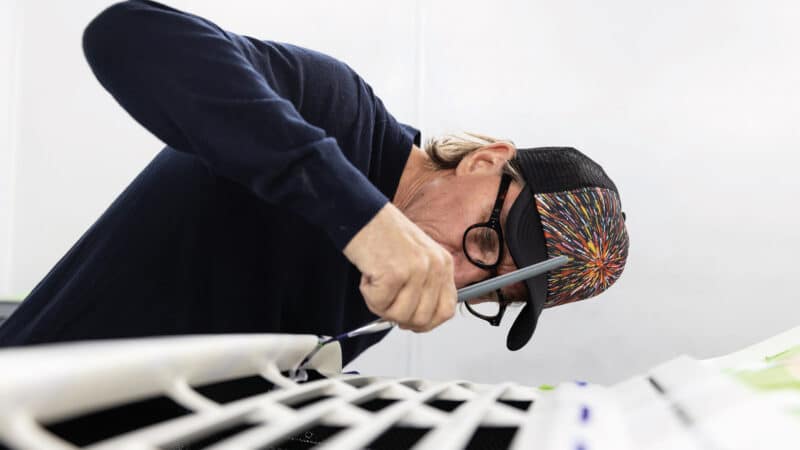
Painting a Porsche
Lanzante
Motor Sport: Let’s start with Stefan the artist. You painted a special Porsche, which was seen at 2023’s Festival of Speed, and then there’s the painting of yourself in the McLaren at Monaco in 1987.
SJ: The car is based on a Porsche 911 Turbo with one of my TAG turbo engines from the 1987 F1 season. Dean Lanzante obtained some of these engines and decided to do a retro-mod based around that engine bolted into the back of an ’87 911. The TAG turbo was a great engine, but it had its issues when I raced it in ’87 with McLaren because by then the Renault was considered to be the strongest engine. The guys from Los Angeles who own the Porsche wanted to make it an ‘art car’ and asked me to do the paint. It’s a great concept and it’s been fun. So yeah, there’s my artwork on the car and my painting of me at Monaco in the McLaren as the team celebrates its 60th anniversary this year.
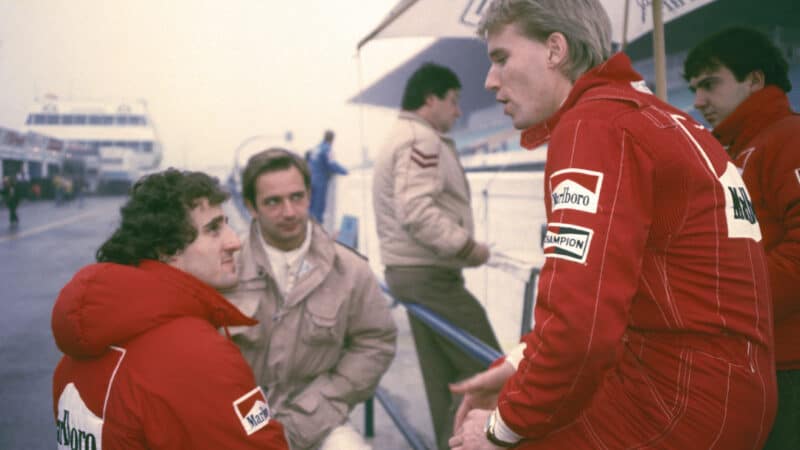
Winter testing at Estoril, 1986, in discussion with Alain Prost and Elio de Angelis.
Grand Prix Photo
MS: Tell me about your art, your paintings, and what has inspired you to get so involved in it over the years.
SJ: I’ve been painting since 1986, as a hobby between races, just something I loved doing. I found it relaxing and it gets those creative juices flowing. When I stopped driving I began to channel all my energy into the arts and design, and now it’s gaining some traction. The artwork on the Porsche is abstract, giving a feeling of speed, and the intensity of being in the car. I call my paintings ‘Memories of a Past Life’. They’re inspired by my racing, and my style is quite decorative so it lends itself to other products.
I’ve always been interested in art, but it was when Elio de Angelis was killed that I really wanted to do something in his memory so I bought some paints, brushes and canvases. Elio and I were really good friends. We spent a lot of time together, and his accident in testing at Ricard was a very traumatic experience for me. I was there, trying to help him get out of the car, and it was tough, trying to process the whole thing. I found the painting helped me through that.

Stefan Johansson would never win an F1 race but with McLaren in 1987, driving the MP4/3, there were plenty of podiums
MS: How do you deal with losing not only a friend but another racing driver taking the same risks as you?
SJ: We all lived with those risks, especially back then. It was always in the back of your mind. You just had to live with it. You push all the emotions down into some big, dark, black hole somewhere and you can’t allow it to affect you. Once you let it get to you, it’s game over, you can no longer perform at the top level as a racing driver, and I guess I found some sanctuary with my painting.
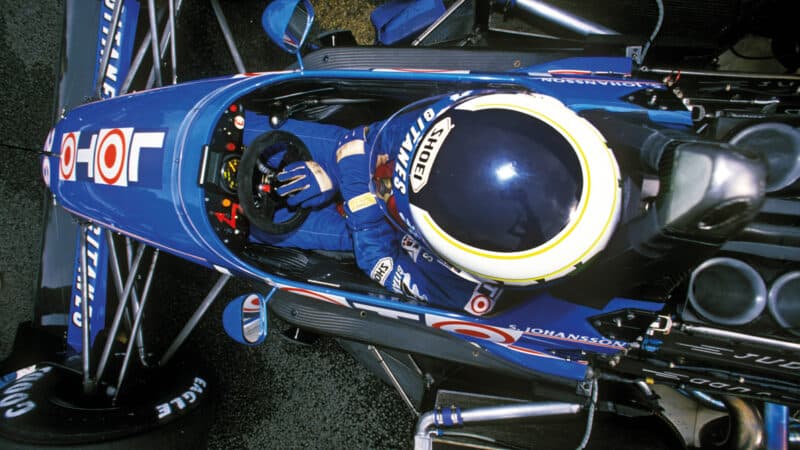
After McLaren, Johansson moved to Ligier
MS: Let’s reel back the years. Formula 3 champion, almost 10 years an F1 driver, IndyCar team owner, Le Mans winner. You only had one year with McLaren, so did you know Ayrton Senna was on his way?
“I learnt more from Prost in a year than in the whole of my career“
SJ: I was pretty sure he would take my seat but I had a good relationship with Ron [Dennis] ever since Formula 3 with Project Four and I had this great opportunity working with Alain Prost. McLaren was a top team, so it wasn’t all bad, and I learnt so much from Alain, the process of how you go about the whole race weekend, how you read the car and relate that to the engineers. My brain was just fried trying to follow him in the first couple of debriefs. He had a very structured process, but when you break it down you begin to understand it. I learnt more from Alain in that one year than in the whole of my career.
Senna was the same. He was fast and incredibly talented, but I don’t think he had anywhere near the understanding or discipline that Alain had in working with the whole car. The driver is the CEO of the car, it’s his car, he manages the people around him, and Alain had everyone wrapped around his finger, directing everything. That was quite an eye-opener for me. There was no secrecy, he shared information, he knew transparency and communication benefits the team come Sunday afternoon. It was so different back then. The days when an engineer would have a pocketful of rollbars ready for last-minute decisions. We didn’t have the mass of data they have today so the driver’s input was vital.
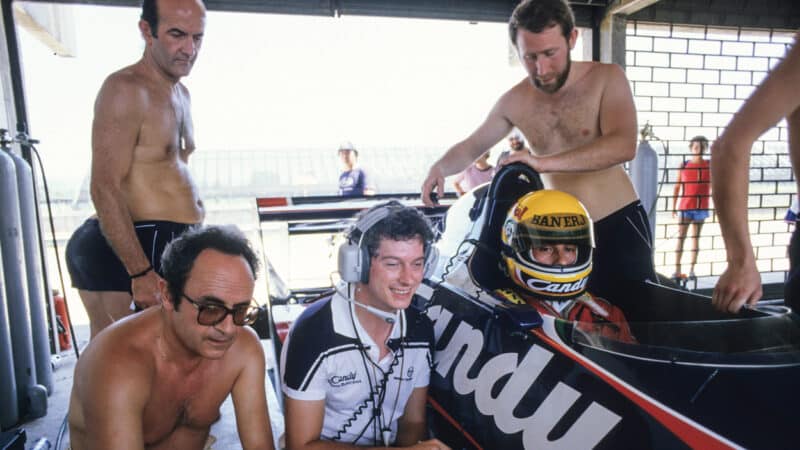
Toleman team-mate Ayrton Senna with Pat Symonds, 1984
MS: What was it that made McLaren stand apart from other teams at the time?
SJ: Not only did Ron re-invent the team, he re-invented Formula 1. He moved the goalposts for everyone. He was first with the carbon-fibre car, first with so much technical innovation. When I raced for him in F3 there was a mezzanine floor in the Project Four workshop, hidden behind blacked-out glass. We called it ‘the fishtank’, and that’s where John Barnard, Alan Jenkins and Steve Nichols were cooking up this new carbon F1 car. He raised the level of presentation, attention to detail, discipline, every aspect of going racing. With his F1 team, we always had every tool to get the job done.
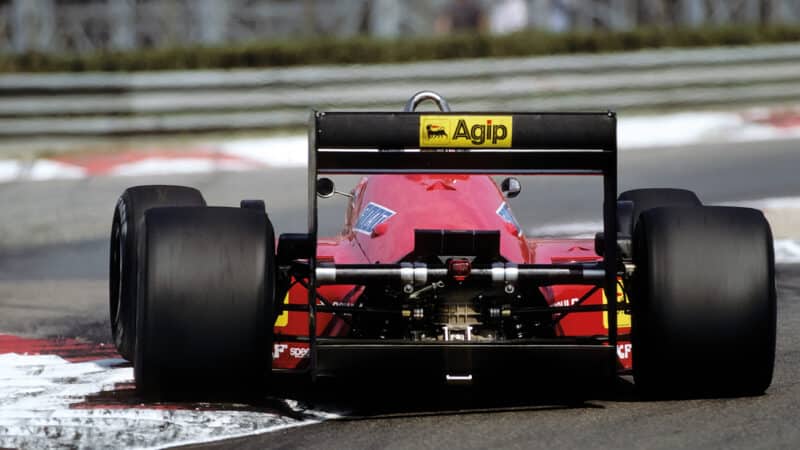
Stefan still feels he’s a Ferrari man
Getty Images
MS: You’d had two years at Ferrari before McLaren. Was your time at Maranello a completely different experience?
SJ: The whole Ferrari experience was just amazing. When you’re part of that family it’s a whole different world, and it’s the same today. It doesn’t matter how many races or championships other teams, or brands, may win it will never be the same as Ferrari. Wherever you go in the world there’s instant respect for a Ferrari driver. It’s extraordinary but that’s how it is.
“In Maranello, we had lunch every day with Enzo at his house“
In Maranello, you go to work, you test the car, it’s what you do, but we had lunch every day with Enzo at his house at Fiorano when we were testing. We talked about everything in life, not just motor racing. They were incredible moments. Enzo was known for being a bit fierce but I never once saw that side of him. He was very gentle, very kind, and he loved his drivers. He was an absolute racer, he’d talk about the car at meetings, always mainly about the engine, not much on the rest of it, and then he’d want to know who you were dating that week. Looking back I realise how special those times with him were. Even now, I feel I belong to the Ferrari family. The team is so passionate, it’s a cultural thing, the life in Italy, the way the Italians are, and the team reflects that. Ferrari is not like any other F1 team.
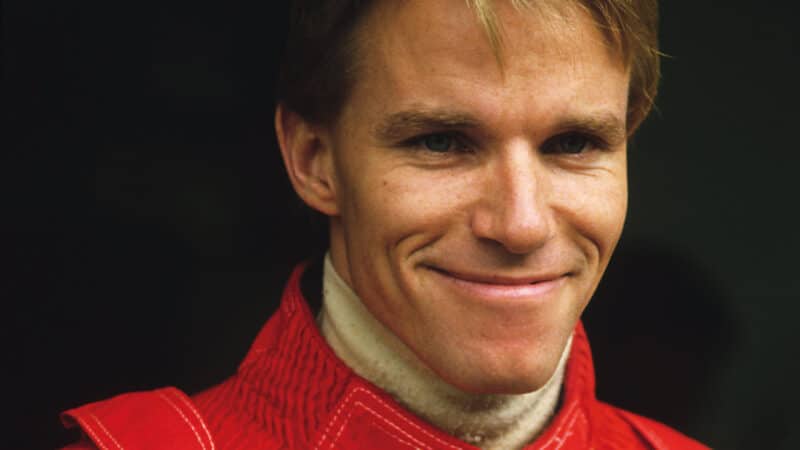
Johansson has fond memories of his time at the Scuderia; in 1985 and ’86 he’d finish seventh and fifth in the drivers’ standings
MS: How was your relationship with Michele Alboreto? Did you get on well with an Italian team-mate at Ferrari?
SJ: We knew each other well. We’d raced against each other in F3 and F2, but of course your first objective is always to beat your team-mate. He’s the only one with the same car, so that was intense. I didn’t speak much Italian but I knew they were talking about me when they referred to Il Blondo – but it was a good time.
We were together again at Arrows for a few races, we did the Daytona 24 Hours in the first race for the Ferrari 333SP, we won Le Mans together in ’97, and we both raced for Audi. We became like brothers in the end, we respected each other.
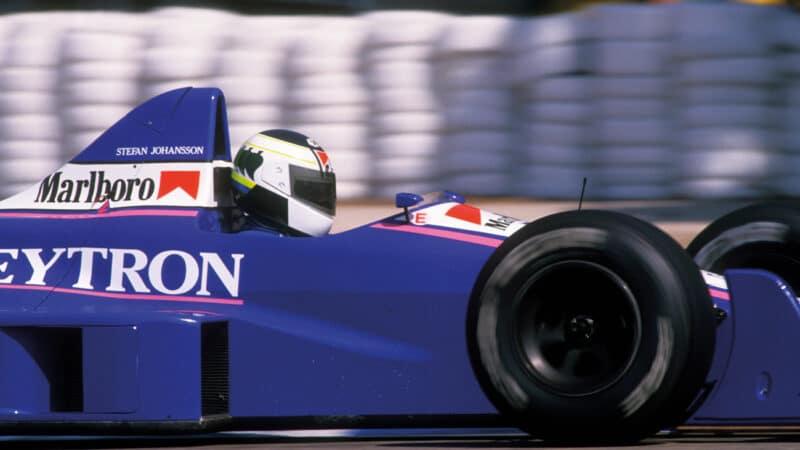
By 1989, at Onyx, Johansson was still among the points.
Grand Prix Photo
MS: Talking of legendary team owners, you raced for Ken Tyrrell. So many drivers say how much they learnt from him.
SJ: Yes, he was tremendously helpful. Ken was like a schoolteacher, and it was the little things you picked up which otherwise you’d have learnt by making mistakes. For a young driver he was terrific, and it was very much a family team – we all ate together, and we had some fun as well. For me it was a hugely helpful and enjoyable part of my career.
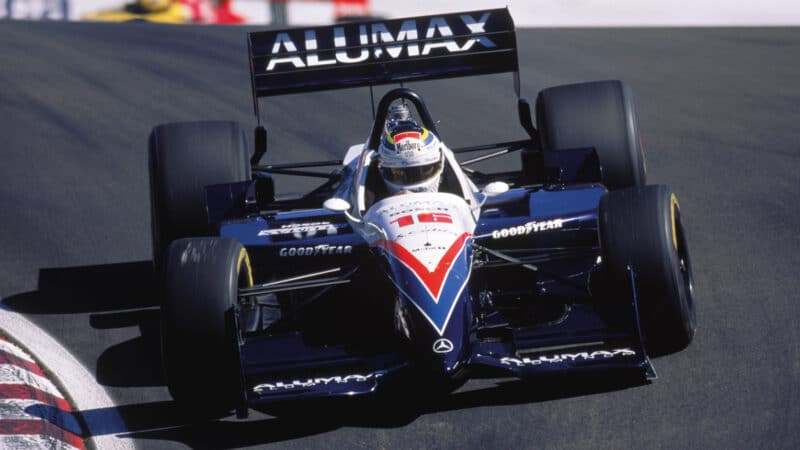
His last outing in IndyCar came in ’96 at Laguna Seca, after five seasons Stateside
MS: Then there was Toleman, yet another different experience, and Ayrton Senna was your team-mate.
SJ: The car was pretty good in ’84. We had Rory Byrne and Pat Symonds on it, so that was a strong team on the design side. It was a good chassis, nice to drive, and Brian Hart’s engine was strong by the end of the year.
It was early in Senna’s career, of course, but we all knew he had massive talent and you could see it. Everyone was already talking about him and his success in Formula Ford and Formula 3. He was a big personality too. Had he not been a racing driver he’d probably have been head of JP Morgan or some other big company. That was his mindset. He was relentless in every way, quite strong with the team, but they appreciated that he’d deliver on the track – which he always did. If he wanted something he would push until he got it but – and this was interesting – at Estoril I out-qualified him on the first day and in his mind it was simply inconceivable that I could be faster than him. Later on I found out that the team took the engine out of my car and put it into Senna’s car for qualifying – there had to be something wrong with his car! That just sums the guy up. He couldn’t believe I was faster. I wish there had been more data when I was team-mates with Prost and Senna, so I could have seen right away where they were faster, and then you can adapt your driving. Senna had a unique technique with the turbo engine. He kept blipping the throttle to keep the turbo spooled up, to keep the car accelerating earlier, and that was useful in certain parts of the track.
At Toleman, when Alex Hawkridge stood him down for Monza, because Ayrton had signed for Lotus for ’85, that was my first race and I didn’t know the car at all. I stalled at the start, so I was dead last, but the car was quick and I came through to finish fourth. So that was good first time out.
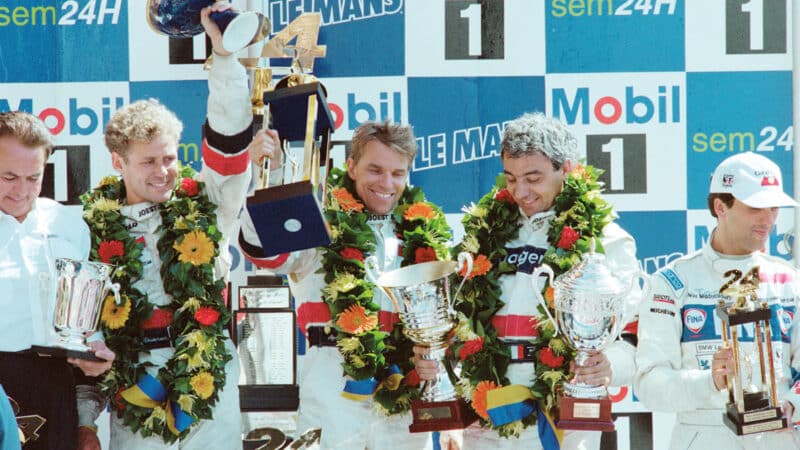
Stefan was no slouch in sports cars either, scoring an outright win at Le Mans in 1997 with Tom Kristensen and Michele Alboreto
Getty Images
MS: Rory Byrne, who designed that Toleman, has always been under the radar and perhaps not appreciated as he should be.
SJ: Yes, absolutely, Rory is the most under-rated designer in Formula 1. He’s been involved in so many great cars. He’s brilliant. The ’85 Toleman, which I never got to race, was the best F1 car I ever drove. In testing at Rio it was just fantastic. After two laps I thought, “Wow, this car is gonna be so fast.” You just feel it right away when a car is that good. The geometry made that car feel so calm on turn-in. Normally there’s a lot happening between turn-in and the apex, but all you had to do with this Toleman was line it up, turn in, hit the apex, it was all so calm and easy. So Rory had produced an amazing car, as he often did, and he’s still working today. I don’t think he wants to be in the limelight, to be a ‘star’, he just gets on with what he enjoys doing.
MS: In 1989 you went to the Moneytron Onyx F1 team and the car had real potential. Was that a lost opportunity?
SJ: What we achieved with such a small team run by Mike Earle was just amazing. There was a lot of talent there, and the car was really good. Remember, we had to go through pre-qualifying every Friday – there were 39 cars entered for the championship that year with 26 making the grid. It was brutal. The tracks were always damp early in the morning, and that one-hour session took everything out of you just to get that one lap to get you through to qualifying proper. To have a podium and finish in the top ten of the constructors’ championship was incredible and we never had a big budget from Moneytron.
The designer Alan Jenkins and I used to go to Jean-Pierre Van Rossem’s office in Belgium between races and we’d sit there until we had the money. It was crazy, but I liked Van Rossem. He was eccentric but he did everything that he promised he would do in the end. If we’d had a bigger budget we could have achieved even more with that car from Alan Jenkins. Van Rossem baled out at the end of the year and this guy Peter Monteverdi took over the team so everyone pretty much left after that and it fell apart. There are so many wild stories from that year, but I won’t publish the book until the day after I die. I’m joking.
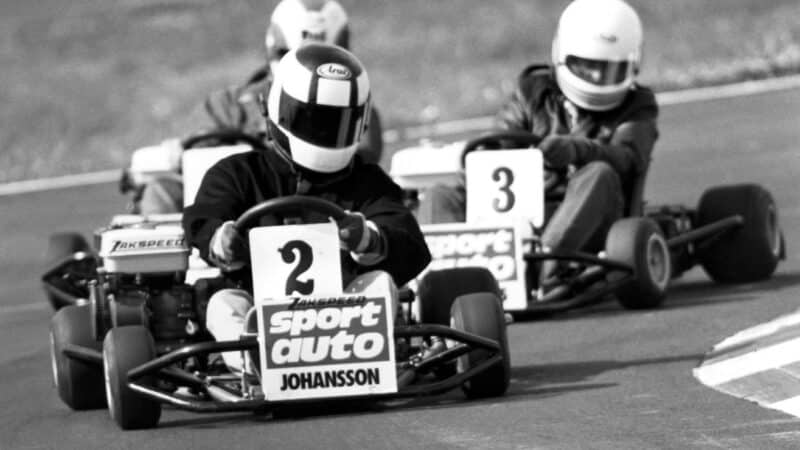
Kart race before the 1985 German GP
Grand Prix Photo
MS: You won Le Mans late in your career, with thoughts of retirement already in your mind.
SJ: Yeah, I’d retired from IndyCar and was going to take some time away. I’d driven the Porsche 956 for Reinhold Joest back in ’83 and ’84 and he asked me to come and do Le Mans in ’97 with Michele and Tom Kristensen. I thought, “Sure, why not?” It was weird because that kicked off my sports car career which lasted nearly 15 years. Tom and I came late to the team. I only did a few shake-down laps before the race. I knew the track pretty well – but Michele qualified the car on pole. I didn’t really know the car but Le Mans is all about getting into a rhythm so once you do that it’s fine. I knew how good Tom was. He didn’t try and impress everyone, he just got on with it. Scandinavians tend not to waste any words, and he didn’t make any mistakes, which is important.

Driving for Audi at Le Mans, 1999
DPPI
MS: You have managed Scott Dixon since he came to race in America. Could he have been a big star in Formula 1?
SJ: Yeah, I think so. He had an opportunity, testing with Williams–BMW in Barcelona, and it went really well. On the second day he had some new tyres and I told him, “You know what you gotta do now, don’t you?” He said, “Yeah mate, I’ll either be quickest or in the wall.” It rained that day, so no quick laps, but the team was very impressed with Scott. The problem was BMW didn’t want to risk taking a rookie driver. We also had a test lined up at Ferrari but Chip [Ganassi] came to us with a massive offer, so we went for that and the rest is history. Nobody has been with one team as long as Scott has been with Ganassi. We took him into my Indy Lights team when he was a teenager. We could see how much talent he had, and it’s been an incredible journey. Scott is a really good human being, an amazing person in every way. That’s rare in our business. As a racer he’s so methodical, he picks his time to fight, keeps scoring points, and that’s made him a six-time IndyCar champion.
He’s still hungry, he loves what he’s doing, and he’s one of the fittest on the grid. He enjoyed doing Le Mans with Cadillac and it’s clear General Motors is there to win. The team is very impressive, so he’ll probably want to do more. He was disappointed he couldn’t do the Goodwood Revival last year as it clashed with the IndyCar programme.
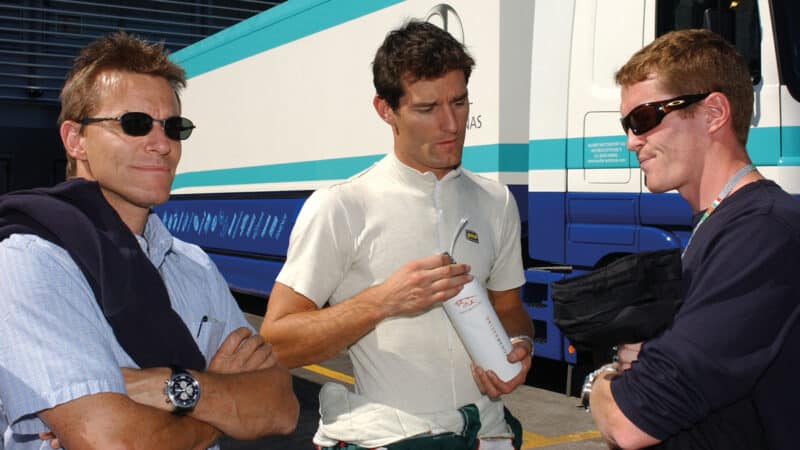
With Mark Webber and Scott Dixon, Monza, 2003
MS: When were you happiest during such a long and varied career in the sport?
“The best were the karting days. It’s the purest form of racing“
SJ: The best were the karting days. It’s the purest form of racing, insanely competitive, no aerodynamics or suspension, just four wheels and a steering wheel. It’s all about feel, the fun of racing at a time when you’re young and have no other worries. Then I guess it’s IndyCar – that was a revelation after 10 years in F1 because it was back to basics. The tracks were so raw and unforgiving. A driver loves that. Nobody wants to drive around on a dance floor with 300m of run-off if you get it wrong. If you do that in IndyCar you’re gonna hit a wall and damage the car. Today, in some ways, IndyCar is the best-kept secret in motor racing. The racing is fierce, so close, and the tracks are still great, a little bit raw. You don’t need sophistication to produce great racing, and of course the less aero you have, the better the racing, and it’s way less likely the same car will win every time.
MS: So, finally, what’s your view of this year’s Formula 1 season so far?
SJ: Well, you have to say Adrian Newey and the whole Red Bull team have done, and are doing, an incredible job. If all the key people in that team stay where they are I can’t see anyone beating them for a very long time. Max Verstappen is getting better and better, and the team has so much momentum. That’s how Formula 1 looks to me right now and I could see Red Bull dominating for years.
